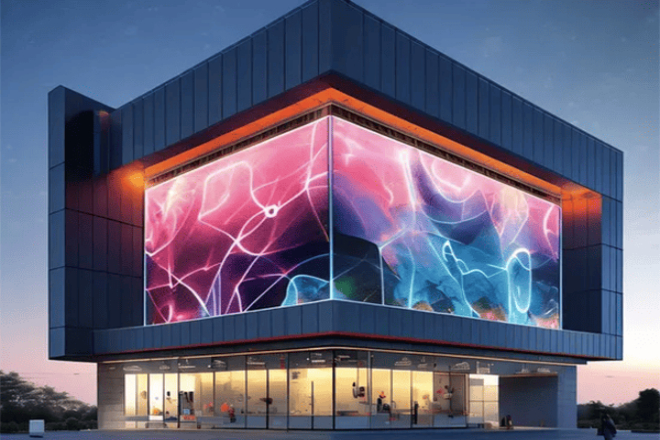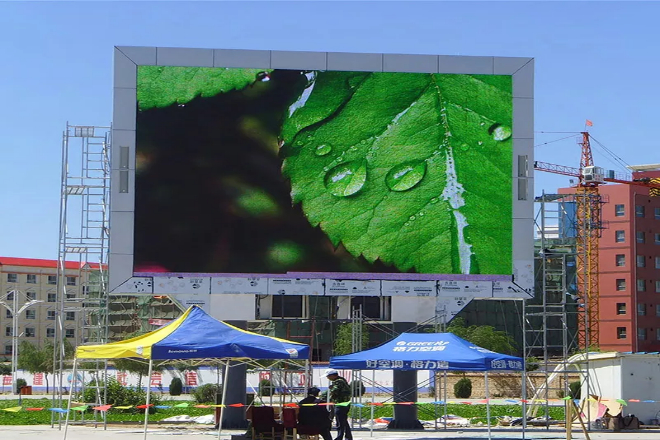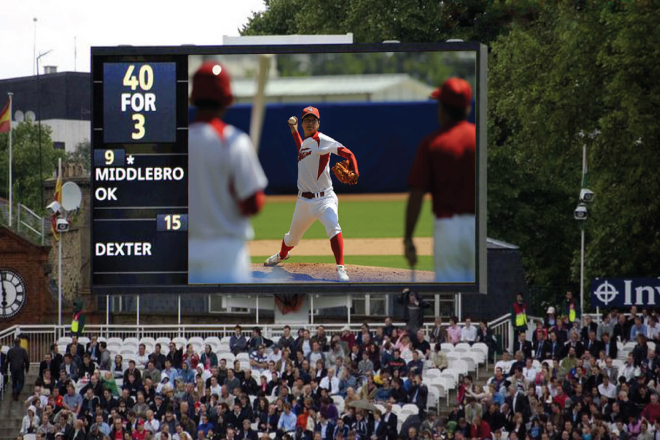序章

情報爆発の時代である今日、 LED表示画面は、情報表示や視覚的コミュニケーションの重要なツールとして、広告、会議、公演、スタジアムなどさまざまな分野で広く使用されています。
しかし、LED ディスプレイ スクリーンを選択する際には、多くのモデルと仕様の選択に直面することがよくあります。選択したモデルが実際のニーズを満たさない場合、一連の問題と結果をもたらす可能性があります。選択した LED ディスプレイ スクリーンのモデルが実際のニーズと一致しない場合、何が起こるかについて説明します。
1. LEDディスプレイ画面モデルとアプリケーション間の不一致の具体的な兆候
LED ディスプレイ画面を選択する際に、実際のアプリケーション シナリオのニーズを無視すると、選択エラーにつながる可能性が高くなります。
このエラーは、表示効果に影響を与えるだけでなく、使用にも多くの不便をもたらします。次に、LED ディスプレイ画面モデルがアプリケーション シナリオと一致しない場合に発生する具体的な問題について説明します。
1). サイズの不一致
1.1) 選択した LED ディスプレイ画面のサイズが実際の設置スペースと一致しません。
こんな状況に遭遇したことはありませんか?LEDディスプレイスクリーンをワクワクしながら購入したものの、現地で比較してみると大きすぎて収まらなかったり、小さすぎて収まらなかったり、スカスカに見えたりしました。
これは、サイズの不一致によって引き起こされる恥ずかしさです。ディスプレイの解像度と明るさにのみ注意を払い、実際のサイズを無視すると、インストール時に混乱が生じることがあります。
1.2) サイズが大きすぎたり小さすぎたりすることがインストール効果とユーザーエクスペリエンスに与える影響:
サイズが大きすぎると、設置が難しくなるだけでなく、追加のサポート構造が必要になり、コストと複雑さが増す可能性があります。また、画面が大きすぎると圧迫感を感じ、近くで見ると目が疲れやすくなります。
逆に、サイズが小さすぎると、小さな映画を見ているかのように、常に物足りなさを感じ、遠くから見るとさらにぼやけてしまいます。したがって、サイズを正しく選択した場合にのみ、美しさと実用性の両方を実現できます。
2) 解決 基準を満たしていない
2.1) LEDディスプレイの表示効果に対する解像度の重要性:
解像度とは、簡単に言えば、画面上のピクセルの数です。ピクセル数が多いほど、画像が鮮明になり、細部まで豊かになります。携帯電話の写真を見るときと同じように、高解像度の写真は、ぼやけた写真よりも常に見栄えがします。
2.2) 解像度が低すぎるか高すぎる場合に発生する可能性のある問題:
解像度が低すぎると、画像がモザイクのようになり、ぼやけて不明瞭になります。特に、小さなフォントや高解像度のビデオを表示する場合、それは単に目にとって拷問です。解像度が高すぎると、画像は鮮明ですが、いくつかの問題が発生する可能性もあります。
たとえば、再生デバイスが高解像度に対応できず、画像がフリーズしたり遅延したりすることがあります。また、伝送帯域幅が十分でないため、画像の滑らかさに影響が出る可能性があります。
したがって、自分に合った解像度を選択する必要があります。高すぎても低すぎてもうまくいきません。
3). 輝度 色が要件を満たしていない
3.1) 明るさが高すぎたり低すぎたりすることが視聴体験に与える影響:
明るさとは、画面から発せられる光の強さのことです。明るさが高すぎると、まるで太陽を見つめているような感じになります。目が耐えられず、しばらく見ていると疲れてしまいます。また、明るさが高すぎると電力を消費し、放熱も問題になります。
明るさが低すぎると、暗闇の中で物を見ているような感じになり、何もはっきりと見えません。特に明るい環境では、画面がガーゼで覆われているかのようにぼやけます。
3.2) 色の偏差は情報伝達の精度に影響します。
色彩は、LED ディスプレイ画面の魅力のひとつです。しかし、色が偏っていると、問題が生じます。
例えば、赤を表示したいのにピンクやオレンジになってしまうと、広告や情報発信の際に意味が全く変わってしまいます。色の偏りは視聴者に誤解を招き、ブランドイメージにも影響を与える可能性があります。
4). 不十分 リフレッシュレート
4.1) リフレッシュレートが動画像の滑らかさに与える影響:
リフレッシュ レートとは、画面が 1 秒間に画像を更新する回数です。リフレッシュ レートが高いほど、画像がより滑らかになり、まるで映画を 1 フレームずつ見ているかのように、非常に滑らかになります。
4.2) リフレッシュレートが低すぎるために発生するちらつきやにじみなどの問題:
ただし、リフレッシュレートが低すぎると、画像が常にちらついているように見え、眩しくなります。特に動きの速い画像を表示すると、スローモーションを見ているかのようににじみが発生し、特に不快になります。
これは視聴体験に影響を与えるだけでなく、重要な情報を見逃す原因にもなります。したがって、画像がより滑らかで自然になるように、リフレッシュ レートを高くする必要があります。
2. LEDディスプレイモデルとアプリケーション間の不一致によって起こり得る結果

1). 設置が難しくコストが増大する
LED ディスプレイのサイズ、重量、または設置方法が実際のアプリケーション シナリオと一致しない場合、設置プロセスは非常に困難になります。
たとえば、ディスプレイが大きすぎたり重すぎたりする場合は、追加のサポート構造や吊り上げ装置が必要になる可能性があり、設置の複雑さが増すことは間違いありません。
さらに、ディスプレイの設置インターフェースが現場の機器と互換性がない場合は、追加の変更やカスタマイズが必要になり、設置プロセスが複雑になります。
モデルの非互換性により、設置プロセス中に追加の材料、機器、および人員が必要になる可能性があり、設置コストが直接増加します。
同時に、設置プロセスの複雑さにより設置時間も長くなり、時間コストが増加します。場合によっては、設置の難しさにより、複数回のやり直しや調整が必要になる可能性があり、コストがさらに増加します。
2). 使用効果が低い
型式に適合しない LED ディスプレイを使用すると、画質の低下、色の偏り、明るさ不足または過剰、リフレッシュ レート不足などの問題が発生する可能性があります。
これらの問題は視聴体験に直接影響し、視聴者に不快感を与えたり、画面上のコンテンツをはっきりと見ることができない原因となります。
画質の悪さは、モデルの不適合の最も直接的な現れです。視聴者はぼやけた画像、歪んだ画像、ちらつく画像を見ることになり、視聴の楽しみが大幅に減少します。
同時に、ディスプレイの明るさや色が適切に設定されていない場合、視聴者の目に刺激や疲労を引き起こし、視聴体験にさらに影響を与える可能性があります。
3). メンテナンスコストの上昇
モデルに適合しない LED ディスプレイは、メンテナンス時にさらに困難に直面する可能性があります。たとえば、ディスプレイのアクセサリが従来のモデルと互換性がない場合、交換時に特別なアクセサリやカスタマイズされたアクセサリを見つける必要があり、メンテナンスの難易度とコストが増加します。
また、ディスプレイの構造や回路設計に無理があると、修理にさらに時間と手間がかかる可能性があります。
アクセサリの交換の不便さとメンテナンス費用の高さは、モデルの不適合の直接的な結果です。アクセサリの互換性がなかったり入手が困難だったりすると、メンテナンスに長い時間待たされたり、高額な費用を支払わなければならない場合があります。
同時に、メンテナンス プロセスが複雑であるため、専門の技術者による操作も必要になる可能性があり、メンテナンス コストがさらに増加します。
4). 安全上の危険
モデルに適合しない LED ディスプレイは、使用時に安全上の問題が発生する可能性があります。たとえば、ディスプレイの回路設計が実際のアプリケーション シナリオの電圧や電流と一致しない場合、火災や感電などの安全上の事故が発生する可能性があります。
また、ディスプレイ画面の構造設計が不安定であったり、材質が安全基準を満たしていない場合は、使用中に倒壊や破片などの事故が発生し、人や財産に損害を与える可能性があります。
回路の不一致は、モデルの不一致によって引き起こされる重大な安全上の危険です。不適切な回路設計や実際のアプリケーション シナリオとの不適合により、過電流、短絡、過熱などの問題が発生し、火災につながる可能性があります。同時に、構造の不安定性も重要な安全上の危険です。
ディスプレイ画面の構造設計が不合理であったり、材質の品質が悪いと、使用中に崩壊や破片などの事故が発生し、周囲の人や財産に重大な脅威を与える可能性があります。
3. 一貫性のないモデルのLEDディスプレイ画面の選択を避ける方法

LED ディスプレイ スクリーンを選択するときは、モデルが実際のアプリケーション シナリオに適合していることを確認することが重要です。要件を満たさないモデルを選択しないようにするには、次の点から始めることができます。
1). 要件と予算を明確にする
LED ディスプレイ スクリーンを選択する前に、まず使用要件と予算を明確にする必要があります。
使用要件には、ディスプレイ画面のサイズ、解像度、明るさ、リフレッシュ レートなどの主要なパラメータに加え、設置環境や使用シナリオなどの特定の条件が含まれます。
予算はディスプレイ画面を購入するための経済的な制限であり、選択できる範囲とグレードを決定します。
ニーズと予算を明確にすることで、選択肢を絞り込み、盲目的な選択や経済力を超えた購入を避けることができます。同時に、メーカーや販売者とのコミュニケーションを改善し、彼らが私たちのニーズをより正確に理解し、より適切なソリューションを提供できるようにもなります。
2). 製品のパラメータとパフォーマンスを理解する:
LEDディスプレイを選択する際には、さまざまなパラメータとパフォーマンス指標を詳細に理解する必要があります。これらのパラメータと指標には以下が含まれます。 ピクセルピッチ、 解像度、明るさ、コントラスト、リフレッシュレート、 視野角、 消費電力など
これらのパラメータを理解することで、ディスプレイのパフォーマンスと品質をより包括的に評価できます。
さらに、ディスプレイの材質、プロセス、保護レベルなどの情報にも注意を払う必要があります。これらの情報は、ディスプレイの耐久性と信頼性を判断し、より情報に基づいた選択を行うのに役立ちます。
3). 定番のメーカーやブランドを選ぶ
LED ディスプレイを選択するときは、評判の良いメーカーとブランドを選択する必要があります。通常のメーカーとブランドは通常、完全な生産システム、厳格な品質管理基準、優れたアフターサービスシステムを備えています。
信頼できる品質と安定した性能を備えた製品を提供するだけでなく、使用中にタイムリーな技術サポートと修理サービスも提供します。
正規のメーカーやブランドを選択すると、偽造品や粗悪品を購入するリスクも軽減されます。偽造品や粗悪品は品質を保証できないだけでなく、安全上の問題もあり、使用に重大な影響を及ぼします。
結論
要約すると、モデルに適合しない LED ディスプレイ スクリーンを選択すると、設置の難しさ、使用効果の低下、メンテナンス コストの増加、安全上の危険など、一連の問題が発生する可能性があります。
これらの問題は、LED ディスプレイ画面の正常な使用に影響を与えるだけでなく、仕事や生活に不必要なトラブルや損失を引き起こす可能性があります。
最後に、LEDディスプレイスクリーンについてさらに詳しく知りたい場合は、 ご連絡ください。
